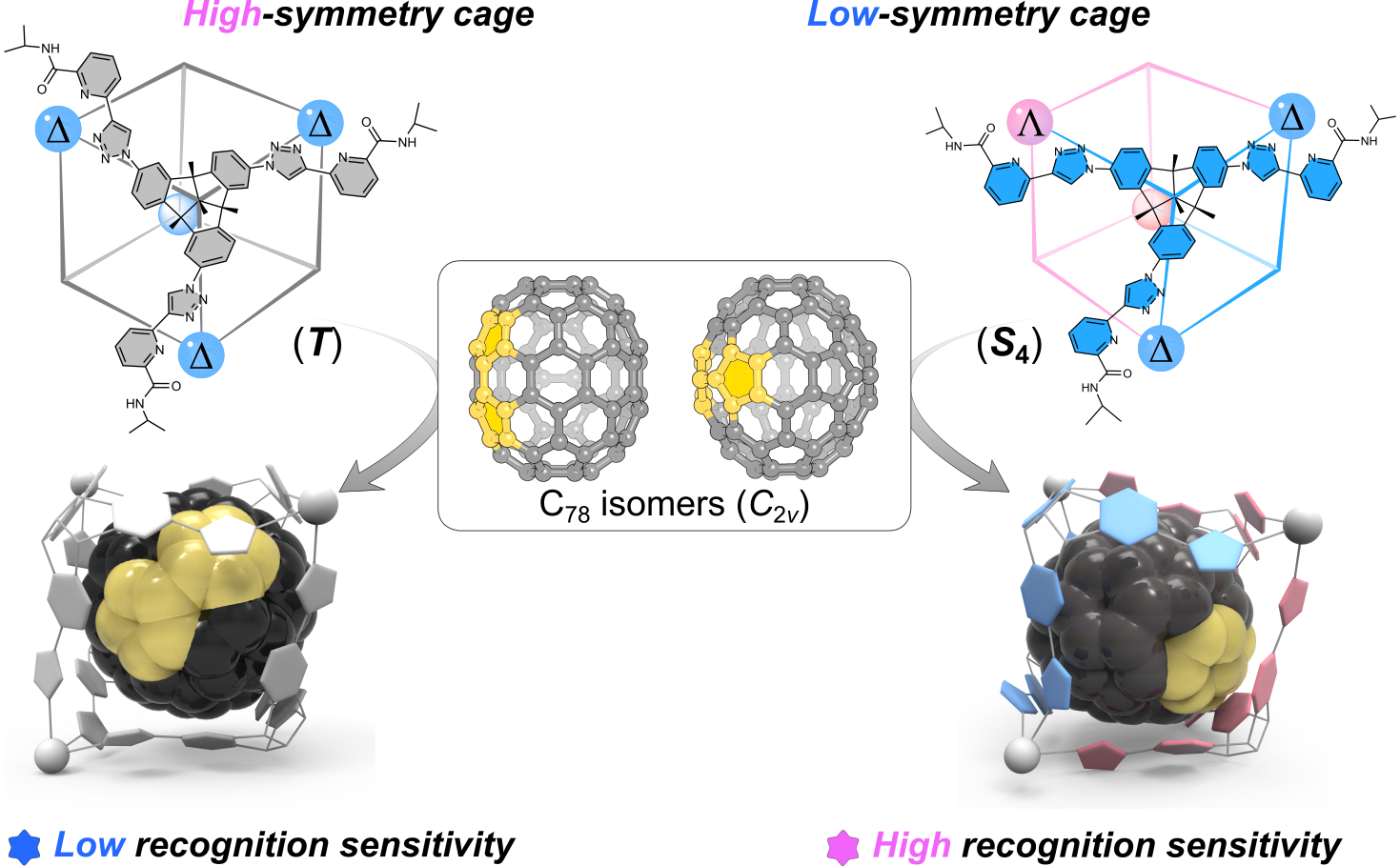Molecular recognition and binding are fundamental to biological systems, exemplified by the specificity between enzymes and substrates. Drawing inspiration from these complex natural mechanisms, scientists have developed artificial systems that emulate biological recognition. The discovery of buckminsterfullerene (C60) marked a significant milestone in the study of three-dimensional carbon materials. However, as the number of isomers increases exponentially in higher fullerenes (Cn, n>7), achieving their selective enrichment through molecular recognition remains a formidable challenge.
In a study published in Nature Synthesis, Prof. Sun Qingfu's research group from the Fujian Institute of Research on the Structure of Matter, Chinese Academy of Sciences, in collaboration with Prof. LU Xing's team from Huazhong University of Science and Technology, introduced two pseudo-cubic metal-organic cages (MOCs) with distinct symmetries, T and S4. These cages, featuring unique cavity microenvironments, demonstrated exceptional recognition specificity toward higher fullerene isomers.
Taking advantage of asymmetric ligands to inherently generate MOCs with reduced symmetry, researchers synthesized two pseudo-cubic cages based on tribenzotriquinacenes (TBTQs), possessing T and S4 symmetries, dictated by the C3- and C1-symmetric bowl-shaped ligands.Notably, a symmetry breaking from S4 to C2 is observed upon encapsulating the low-symmetry, ellipsoidal D2-C76 guest within the S4-4 cage, indicating a precise shape matching curtails the random rotation of guest. As a control, no symmetry reduction was detected for the high-symmetry T-3 cage.
Encouraged by these findings, researchers studied selectively recognized pair of highly similar C2v-symmetric C78 isomers, namely C2v(2)-C78and C2v(3)-C78, which can be interconverted through a one-step Stone-Wale transformation (SWT).
Researchers found that compared to high-symmetry T-3 cage, the rotation restriction of C78 isomers within the low-symmetry S4-4 cage more sensitively reflects the constitutional difference through changes in the host's chemical shift.The sophisticated void and proper shape complementarity, brought about by reduced symmetry, are responsible for the high recognition sensitivity of S4-4 towards C2v-symmetric C78 isomers. Furthermore, they revealed that the discernible variancesin binding affinity, stemming fromheightened recognition sensitivity, positions S4-4 as a promising candidatefor isolating the inextricableC2v-symmetric C78 isomers.These findings underscore the power of symmetry reduction in enhancing molecular recognition.
This study represents the preliminary exploration of MOCs recognizing higher fullerene isomers by employing the symmetry reduction strategy, positioning the MOCs family as promising candidates for future identification and separation of a wider range of fullerene isomers. By mimicking the specificity observed in biological systems, these low-symmetry coordination cages can offer new insights into molecular recognition and pave the way for their future applications in material science and molecular separation.

Comparison of the recognition sensitivity for a pair of closely related C2v-symmetric C78 isomers using pseudo-cubic cages with T and S4 symmetries(Image by Prof. SUN’s group)
Contact:
Prof. SUN Qingfu
Fujian Institute of Research on the Structure of Matter
Chinese Academy of Sciences
Email: qfsun@fjirsm.ac.cn